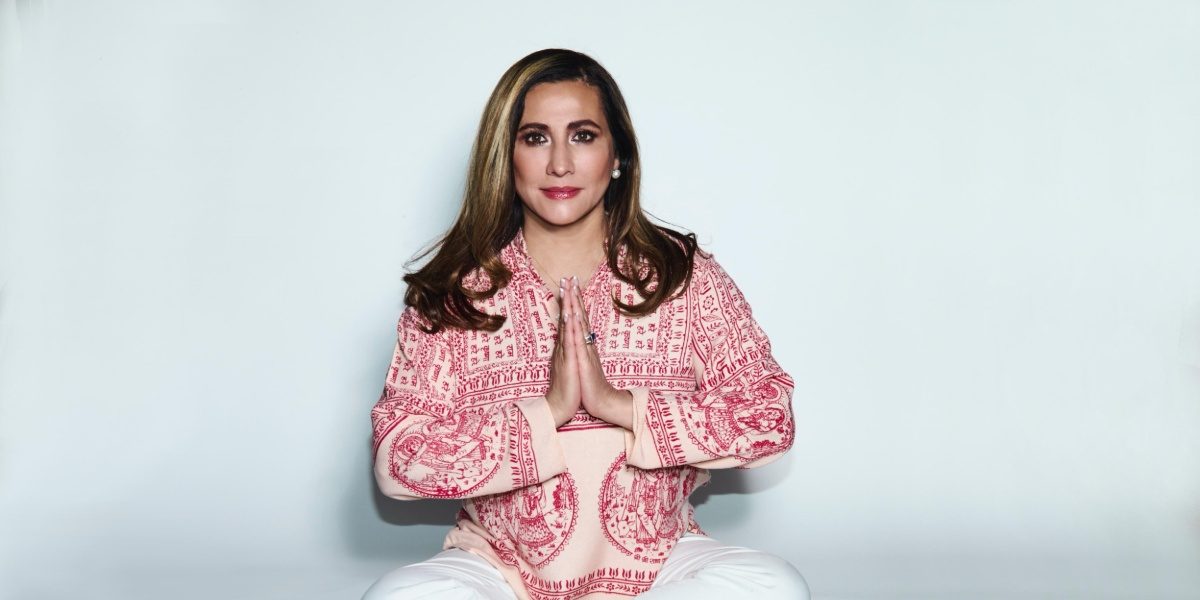By: Jeremy Murphy
Meera Gandhi remembers the phone call vividly. It came from London, from the celebrated fashion photographer and professor Dr. Ram Shergill, whose work often blurs the line between art and social commentary. He was planning a conceptual shoot—something rich with history and symbolism—and he wanted her to be part of it. The project, The Hatted Woman and Her Unhurried History in Early Modern Ballads, drew from the writings of New York scholar Professor Elizabeth Mazzola, who explored the Hatted Woman as a timeless symbol of liberty, resilience, and practical wisdom. “Ram said, ‘Meera, every time I see the work you’re doing, you remind me of that paper—you’re the modern version of her,’” Gandhi recalls with a smile.
She agreed immediately, and the two met at London’s Mayfair Hotel for the shoot. “The theme fascinated me,” Gandhi says. “It connects fashion, philosophy, and history in a way that feels very relevant to women today.” Shergill, known for his portraits of royalty and cultural icons, wanted to reimagine the Hatted Woman through a modern lens—a figure at once elegant and fearless, strong and serene.
The session brought together an extraordinary team of designers, including Elizabeth Emanuel, who famously designed Princess Diana’s wedding gown. “We had some very big names who were excited to show their clothes for this shoot,” Gandhi recalls. “It became this incredible collaboration between art, intellect, and couture.”
images will appear in his upcoming academic paper, which examines the role of women in modern society and how archetypes like the Hatted Woman continue to resonate. The photographs will also appear in Mayfair Magazine and in publications in India and Turkey. “The editor of Mayfair, Selma Day, was actually with me the night before the shoot,” Gandhi says. “She was so excited about it. And Hello Magazine Turkey also loved the concept. A lot of people connected to it because it’s playful on the surface, but very deep underneath.”
For Gandhi, the experience became much more than a fashion editorial. It became an exploration of identity, strength, and endurance. “When I came back, I actually studied the original research,” she says. “I was intrigued to learn that Henri Matisse had done so many portraits inspired by the same theme. Over time, humans and environments change, but women remain the central force—keeping society stable, nurturing families, and holding things together.”
She reflected on how the hat, in both historical and contemporary terms, serves as a kind of armor. “It reminds me of times when I’ve had to just buckle down and do things,” she says. “I put my hoodie on and work. My daughter, Madame Gandhi, is similar—when she needs to get things done, she ties her hair up in a top knot. The hat, the bun, the hoodie—it’s all a kind of armor. It’s symbolic of focus and resilience.”
That idea of the hat as a metaphor for strength resonates deeply with Gandhi’s own work. Through The Giving Back Foundation, which she founded, she has long been an advocate for compassion, education, and spiritual awareness. Her life is an ongoing intersection of philanthropy, mindfulness, and service. “As women today, we juggle so much,” she says. “We handle our children’s lives, our own lives, and our work. I want to help others—especially those who are distressed—find calm and focus through yoga and meditation. That’s why I’m doing Uplift New York.”
At the end of the London shoot, Shergill suggested they take one more image—something reflective of Gandhi’s growing role in global wellness advocacy. “He said, ‘Let’s do another yoga shot, because you’re doing Uplift New York 2026 and you’ll need a fresh picture.’ That was his way of supporting it.” The resulting photograph will be used to promote the upcoming event, which will take place on June 21, 2026, at Rumsey Playfield in Central Park.
UpliftNY26 will be a daylong celebration of yoga, meditation, and mental wellness, timed to the summer solstice. Gandhi envisions it as a sanctuary of spirit, a reminder that uplifting others is the truest way to uplift ourselves. “We’re definitely doing the spiritual and mental wellness day in Central Park,” she says. “It’s something that I feel is so needed right now. The role of yoga and meditation has become crucial because there’s such an overload of information and stress. People need a way to still themselves.”
Her reflections connect centuries of women’s experience with the modern need for balance and inner peace. “In the time of the ballads, people relied more on the Bible,” she notes. “While I love the Bible and the Gita, I find that yoga and meditation are essential now. Reading them is calming, but the practice of stillness is what allows us to center ourselves amid all the noise.”
For Gandhi, the Hatted Woman is more than a character in a poem or painting—it is an enduring symbol of how women move through life with both grace and strength. The archetype’s evolution mirrors her own journey, bridging continents and cultures, uniting art, philosophy, and service. Whether leading a yoga circle in Central Park or standing before Shergill’s lens in Mayfair, Gandhi embodies the same timeless qualities: independence, compassion, and an unshakable sense of purpose.
“She’s swift, capable, and her hat becomes a kind of armor—sealing her in, keeping her safe, and guiding her forward,” wrote Professor Mazzola. Gandhi’s participation in the project brings that idea into the present moment, translating history into action. In her life, as in her portrait, the hat is not just an accessory—it is a declaration. It represents focus, dignity, and resilience.
As the world anticipates UpliftNY26, the spirit of The Hatted Woman endures, reminding us that style and substance can coexist, and that the truest power lies in steadiness. Meera Gandhi has taken an image from centuries past and made it vividly alive today, embodying a message that is as relevant now as it was in the ballads of early modern England: that strength, grace, and purpose are never out of fashion.

















